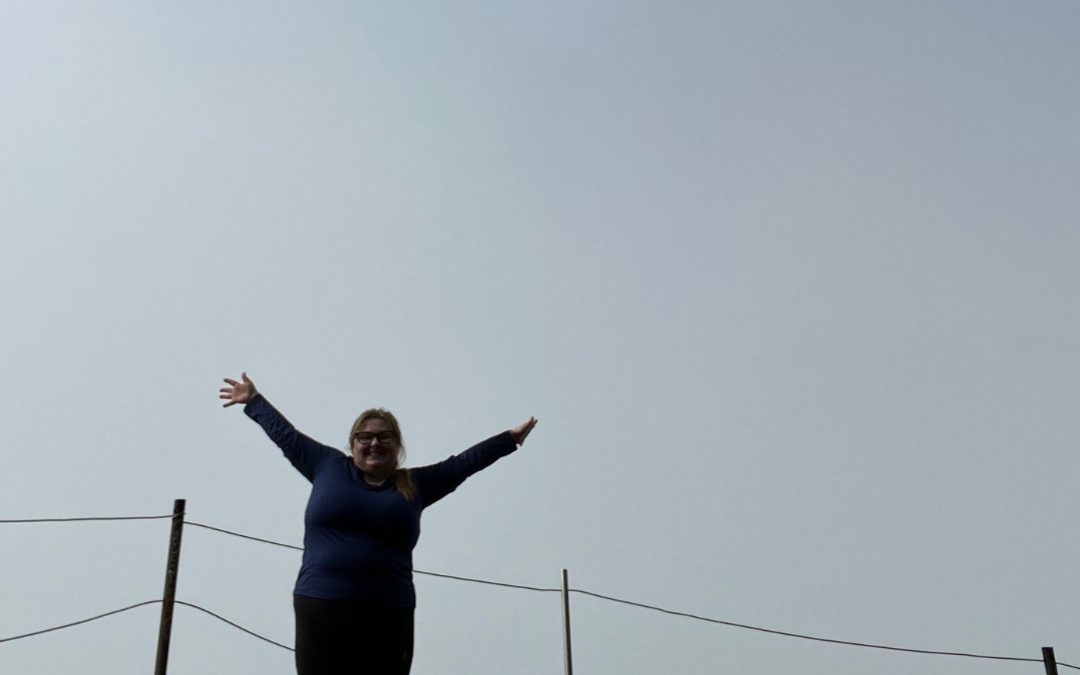
by Guest | Apr 24, 2024 | Being Well, Featured, Uncategorized, Why I'm In
“WHY I’M IN …” An interview with Emery Edwards, AmeriCorps, VISTA
What drew you/your organization to partner with Tillamook County Wellness?
I’ll be honest, I started working with TCW because it was something required of my position as an AmeriCorps VISTA volunteer. I came to Tillamook, though, because I was in search of something more fulfilling, authentic, and close to nature than what I had built in Seattle. Since the first day I learned about TCW I was inspired by the community-driven initiatives to make Tillamook a better place to work, live, and be. I will continue my work with TCW because I am inspired by the passion exhibited by its members towards the never-ending work of improving this county. I have found that TCW embodies what I was searching for when I moved to Tillamook- it is authentic, innovative, fulfilling, and emphasizes genuine relationships and community action.
What, if any, changes have you seen come about as a result of this work?
I can see how TCW brings organizations and people together for initiatives to improve the county. Being behind the scenes and involved in several committees I have the unique opportunity to see so much of what TCW is doing! The collaborative nature of the committees creates buy-in throughout organizations in the county and provides a platform for the exchange of ideas all towards the betterment of our community. I specifically see how a lot of what TCW does is directly informed by data collected about the greatest needs of the county, specifically for vulnerable populations. I see access to care and access to physical activity being increased for all of Tillamook County, but particularly emphasized for historically underserved populations. This is critical work that is not being done everywhere and I’m so happy that TCW is taking that initiative.
What have you learned from being involved in this work?
Gosh, I have learned so much about what it means to bring about community action. This community has so many wonderful members who are passionate about improving the livelihoods of all county residents which has restored some of my faith in humanity. I learn so much from my work with TCW almost every day, but I think the biggest thing I’ve learned is that community action like TCW is even possible!
What are your hopes for this work as it relates to you/your organization?
I hope that this work can continue to grow and expand to include more representatives of the community. I really hope to see more community members, retirees, and other people looking to use their time, energy, and skills to better their community through TCW. I hope that this will cultivate a sense of ownership for Tillamook County residents. In my experience, if you yourself work on something you feel a sense of ownership over it. And that’s really important for this program’s sustainability. The more people come together wanting to improve their community through TCW the more positive impact we’ll be able to make
What are your hopes for this work as it relates to changing community health in Tillamook County.
Moving to Tillamook County has changed my life, and I know it can change so many others. I really hope that this work will improve access to a happy and healthy life for all. It’s really hard to not have any healthy habits, nutritional knowledge, or a healthy relationship with your body. I believe that TCW is providing access to healthy choices we can make for ourselves. This is essential work to improving community health because when you feel like you’re on your own with your health, it’s really isolating and it can feel like you have to reinvent the wheel. TCW is changing Tillamook County for the better, and my biggest hope is that we continue to receive support from the community we serve.
Is there anything else you’d like to share?
I would just like to add that moving to Tillamook County has changed my life for the better! I’ve been able to build a wonderful community of authentic, caring, amazing people who truly care about this community. Tillamook County has its flaws but it is such a special place to me and I am so grateful to have had the opportunity to serve here. I am so looking forward to seeing what amazing things we can accomplish with community action! And, a special thank-you to Michelle Jenck, the Tillamook County Wellness Coordinator. Without her, so much of this work would not be possible!
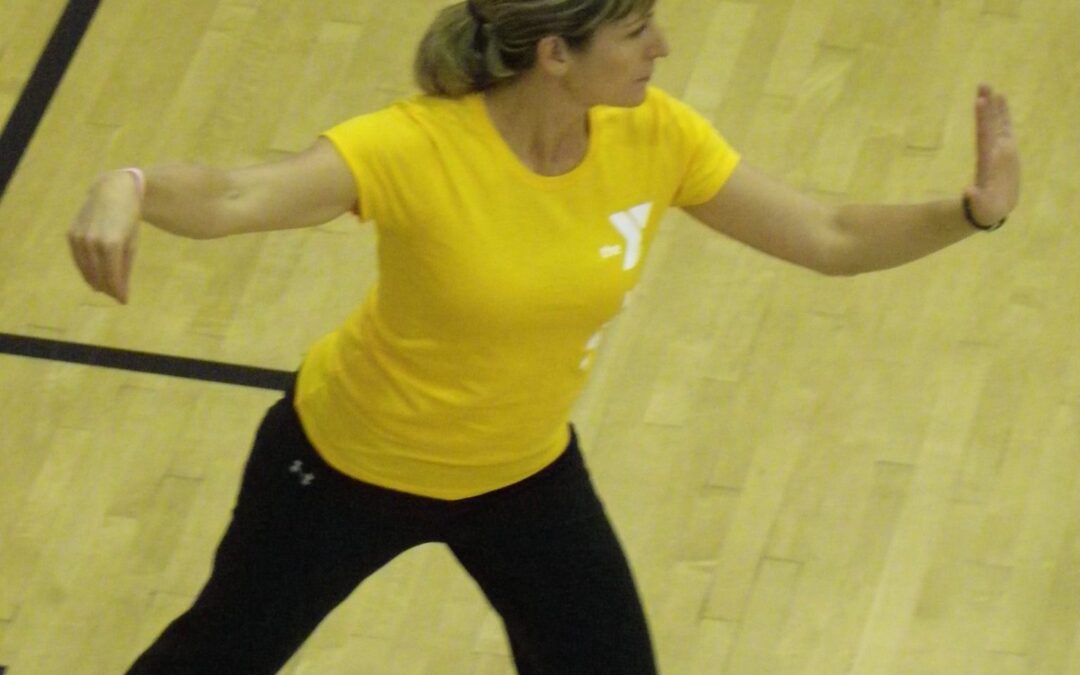
by Guest | Apr 4, 2024 | Being Well, Featured, Move Well
In our busy lives, there is much to pull our focus and distract our minds as we move through our day. The constant buzz of the phone in our pocket, ever-present screens, and ambient noise from a world in constant motion contribute to all the distractions. All of these disturbances lead to inattention and are not ideal for our bodies or minds. This is where the concept of mindful movement can come into play. Using mindful movement helps to increase awareness of your body, which, in turn, will help increase the enjoyment of activities, improve mental focus, and reduce stress. This article will help you explore the benefits of mindful movement and simple methods of incorporating mindfulness into your daily life.
What is Mindful Movement?
Mindful movement is creating an awareness of your body by bringing your full attention to the present moment and the current activity you are engaging in. Mindful movement is done without the intent of judging yourself. Instead, you are acknowledging how the body feels and responds to movement. The difference between exercising and practicing mindful movement is intent. You can exercise by merely going through the motions of the movements with the hope of seeing physical benefits. However, with mindful movements, you notice things like your breathing, how the floor feels under your feet, and the stretch in your muscles as you move them.
Mindfulness originally started as a form of meditation. It became more mainstream as yoga gained popularity, and mindfulness was frequently added to the end of a yoga practice. Practicing mindful movement with exercise then expanded to other forms of exercise, including Pilates and stretching. However, mindful movement is not limited to just formal exercise. It can be incorporated into the things you mindlessly do every day, such as walking the dog or sitting at your desk while working.
The Benefits of Mindful Movement
As the practice of mindful movement grew, so did the research showing the benefits of moving mindfully.
- It is generally accepted that exercise reduces stress and improves emotional well-being. The practice of mindful movement is no exception. Mindful-based interventions show a reduction in anxiety, depression, and stress equivalent to psychological interventions.
- Reducing stressors has the additional benefit of improving immunity. Stress is known to suppress immunity by triggering an inflammatory response. By utilizing methods of reducing stress, you can experience boosted immunity by interrupting the inflammatory response pathways in your body.
- Routinely practicing mindful movement will help improve sleep. The average adult needs 7-8 hours of sleep a night. Mindful movement can help achieve this amount of sleep and improve the quality of the sleep you get.
- Improved focus, concentration, and control of ADHD symptoms have been observed in adults and children who routinely practice mindful exercise, such as tai chi, yoga, and dance.
- Proprioception is the body’s awareness of its place in the space around it and how it moves through space. Mindful movements will improve proprioception. This occurs by using the brain and body connection to retrain the body with new motor skills. These new skills help reduce falls by improving balance.
Examples of Mindful Movement
Mindful movement is for everyone, not just athletes and those who exercise regularly. Mindful movement can be incorporated into your daily activities with both structured and unstructured activities.
Structured:
- Yoga
- Pilates
- Strength training
- Stretching
- Tai Chi
- Qigong
Unstructured:
- Freestyle dance, turn the radio on and let loose
- Singing in the car
- Playing games with children
- Gardening
- Walking your dog
- Washing dishes
- Driving
Begin Moving Mindfully
You can start your practice of moving mindfully at any time and easily incorporate it into your daily routine. There is no need for athletic equipment. No level of activity is too small to add mindfulness to it. You can quickly begin with a walk, seated yoga, stretching, or by adding mindfulness to your current exercise routines. Here are some tips to get you going.
- Add to everyday activities: Focus on basic activities like walking, breathing, gardening, or gentle stretching.
- Minimize distractions: Turn off your phone for the duration of your mindfulness practice. Find a quiet space away from others where you can really focus your mind without interruption.
- Focus on breathing: Use your breath to regulate your mind. Slow, deep breaths help to slow your mind and keep you in the present moment.
- Engage your senses: Pay attention to the sounds around you. Can you smell wet rain on the ground or the fir tree in your yard? Reach out and touch trees, rocks, and flowers as you walk.
- Pay attention to your body: Acknowledge any aches or pains, but do not dwell on them. Notice how your hair moves as the wind blows through it, how the ground feels under your feet, or the movement of your muscles with the activity. If your mind wanders, gently bring your attention back to your body.
Starting small with activities you already do in your daily life makes it easy to add mindful movement gradually. Begin with activities you enjoy or that fit into your lifestyle. Taking the time to pay attention and focus on your movements allows you to gain a new appreciation for the amazing piece of machinery that your body is. By focusing on your body, you are doing more than simply going through the motions of an activity. So remember to be patient and kind to yourself by focusing on progression, not perfection.
Resources:
https://www.sciencedirect.com/science/article/abs/pii/S0272735817303847?via%3Dihub
https://davidvago.bwh.harvard.edu/why-mindfulness-can-help-the-immune-system/
https://pubmed.ncbi.nlm.nih.gov/26802824/
https://www.ncbi.nlm.nih.gov/pmc/articles/PMC4484342/
https://www.ncbi.nlm.nih.gov/pmc/articles/PMC4309156/
Written by Leanna Coy
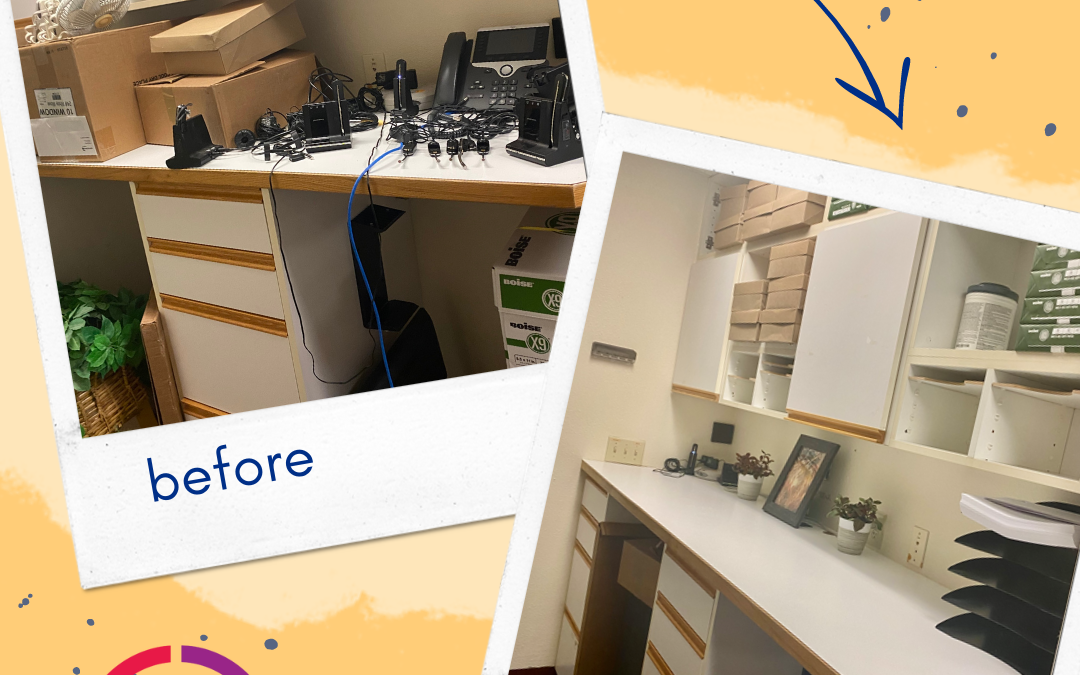
by Michelle | Mar 23, 2024 | Being Well, Featured, Uncategorized, Work Well
Imagine yourself living and working in a space that only sparks joy. This is a goal of our Tillamook County Wellness initiative. It is also the philosophy behind decluttering, a proven approach for improving well-being. Popularized by Japanese organizing consultant, Marie Kondo, decluttering has become a winning strategy for identifying what truly matters in one’s life – keeping the things that spark joy and getting rid of what doesn’t.
Many of us are drawn to Spring cleaning. A time of renewal, Spring feels like the perfect window to get things in order and start with a fresh, clean slate. Decluttering isn’t just for our home environment; it is good for our workspaces too. As part of their Blue Zones well-being initiative, Adventist Health Tillamook is encouraging employees and leaders to declutter their workspaces. The process involves not just removing old, unwanted items but determining what brings value. As you can see by one team’s before and after photos, clearing clutter can transform the spaces in which we spend most of our day from stress-inducing chaos to calm, welcoming environments where people can cultivate a sense of purpose and meaning.
Whether it is our home or work environment, most of us have accumulated things we no longer need. I love reading. My home is filled with many, many partially read books. Kondo suggests that a half-read book is a book that gave you what you needed in the pages that were read. If the book sparked joy, you’d have finished reading it. So, rather than feeling obligated to finish reading every book, we can take heart that we were fulfilled from what we did read and pass that book along for someone else to enjoy.
Kondo says, “People cannot change their habits without first changing their way of thinking.” When we get stuck thinking a certain way, it can get in the way of what we really need. Taking time to deliberately ask if something is serving us is helpful when it clears the debris to make way for what is most meaningful. Disorder is not only visually unpleasant but it can create a kind of mental disorder where we find it difficult to prioritize, plan and stay focused. The little bit of energy it takes to declutter can free up a lot of energy for what really matters.
The process of getting rid of things can also help us identify patterns that are not serving us. I have a lot of shoes; a lot of clothing, in general. If I’m being honest, much of what I own no longer fits me and there aren’t enough days in the year to wear it all even if it did. When we are collecting and holding on to things, it’s a good idea to ask ourselves why it is so important for us to hold onto them? There is often a deeper insight into this. As a child, I wore hand-me-downs and always felt like a fashion flop. I wanted to fit in and have the latest styles like the popular kids. This mindset has carried over into my adult life. Is it serving me now – and did it serve me as a child? No. Being objectively curious about what is behind our habits can be a springboard to improving our mental well-being. As Kondo so wisely states, “When we really delve into the reasons for why we can’t let something go, there are only two: an attachment to the past or a fear for the future.” This is why people like Steve Jobs wear the same clothes every day. Not having to sift through the closet each morning, frees up their mind for more creative pursuits
Decluttering isn’t just about “stuff.” It can be about getting rid of apps on our phone, emails in our inbox, and relationships that drain us. Kondo gives the following advice. “When you come across something that you cannot part with, think carefully about its true purpose in your life.” You may be surprised to realize how much of what you have already served its purpose. “By acknowledging their contribution and letting them go with gratitude, you will be able to truly put the things you own, and your life, in order,” says Kondo.
It can feel overwhelming to tackle cleaning out the attic, garage, or, in my case, the bedroom closet. Breaking it down into smaller tasks can help. For proven tips and tricks, check out Marie Kondo’s book, The Life-Changing Magic of Tidying Up, or any other of her books, which you can also check out from your local library branch. You can also watch “Tidying Up with Marie Kondo” on Netflix.
What will you declutter this Spring? I’ll be tackling my closet!
Written by Michelle Jenck, M.Ed., Tillamook County Wellness Coordinator, Certified Behavior Change Coach
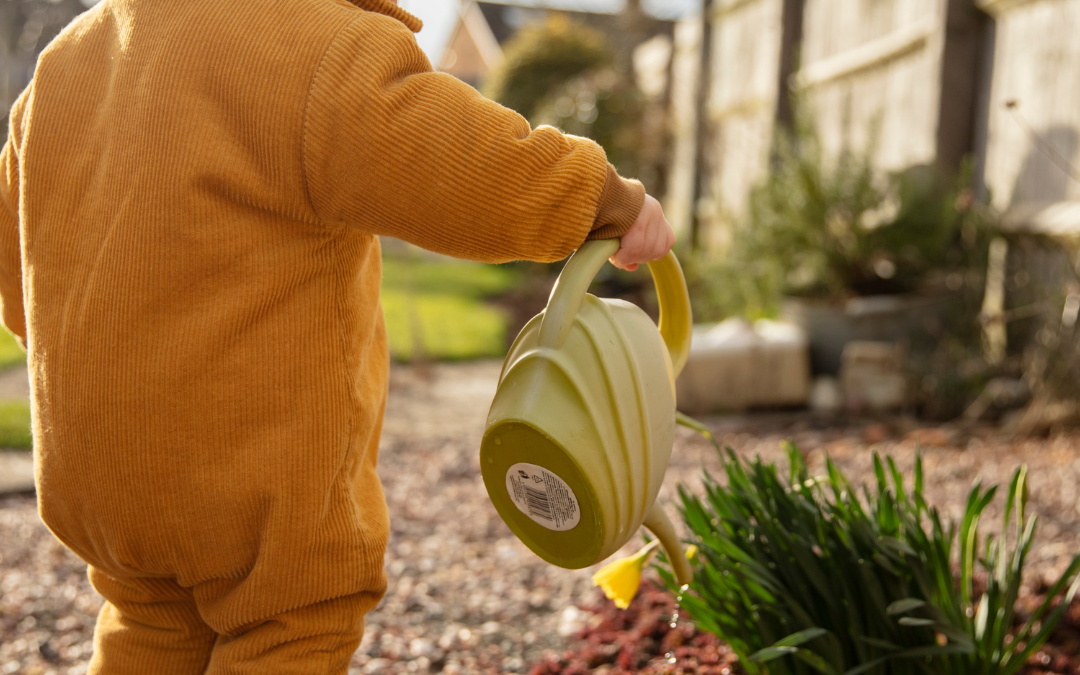
by Guest | Mar 2, 2024 | Being Well, Featured, Move Well, Uncategorized
As spring approaches, a sense of excitement fills the air among local gardeners as they prepare to kickstart their seeds and condition their gardens for the upcoming abundance of fruit and vegetable starts. It’s also a great time to involve children in the excitement of planning and starting a gardening!
Being surrounded by the temptations of technology, encouraging kids to get outside and engage with nature can be a challenge. Gardening is a valuable tool to captivate their interest, offering a hands-on approach to exploring their outdoor world.
As kids dig into the soil, sow the seeds, and tend to the plants, they develop a sense of ownership and responsibility. The act of caring for the seeds instills the concept of delayed gratification, offering a reward that comes from consistently caring for something over time. In our fast-paced “microwave society,” it can be an advantage for our children to understand that things require time and patience to grow.
Let’s explore some entertaining and budget-friendly ways to introduce kids to the joy of gardening!
• Craft environmentally-friendly seed pots using recycled newspapers. This engaging activity not only prepares for planting but also serves as an excellent rainy day project.
• Utilize everyday items like recycled yogurt or cottage cheese containers, and even milk jugs that are cut in half. Remember to poke a few small holes in the bottom for proper drainage.
• Use eco-friendly items like eggshells, egg cartons, or orange peels as planting containers. These can be directly planted in the garden, where they will biodegrade.
• If space is limited, sow seeds directly into a large pot or bucket, creating a compact and manageable container garden. This is ideal for patios or areas with minimal space.
• Capture your child’s interest by aligning the garden with their passions. Consider a pizza garden with basil, oregano, tomatoes, and onions. Or create a fairy garden, allowing them to plant flowers or succulents and add them to the container with fun trinkets.
• Foster excitement by planting something that grows taller than your child. Dill, with its tall and frilly leaves, or classic sunflowers, make for excellent choices.
• Opt for fast-growing options like radishes, lettuce, and some bean varieties, providing a sense of accomplishment as your little ones get to harvest their crops in no time.
By adding in creative and budget-friendly ideas, you’re helping cultivate a love for gardening and sparking the imagination of the young green thumbs in your life!
For more information on starting and growing a garden, visit: https://foodhero.org/gardening
For more local health and wellness information, visit www.tillamookcountywellness.org or follow Tillamook County Wellness on Facebook and Instagram.
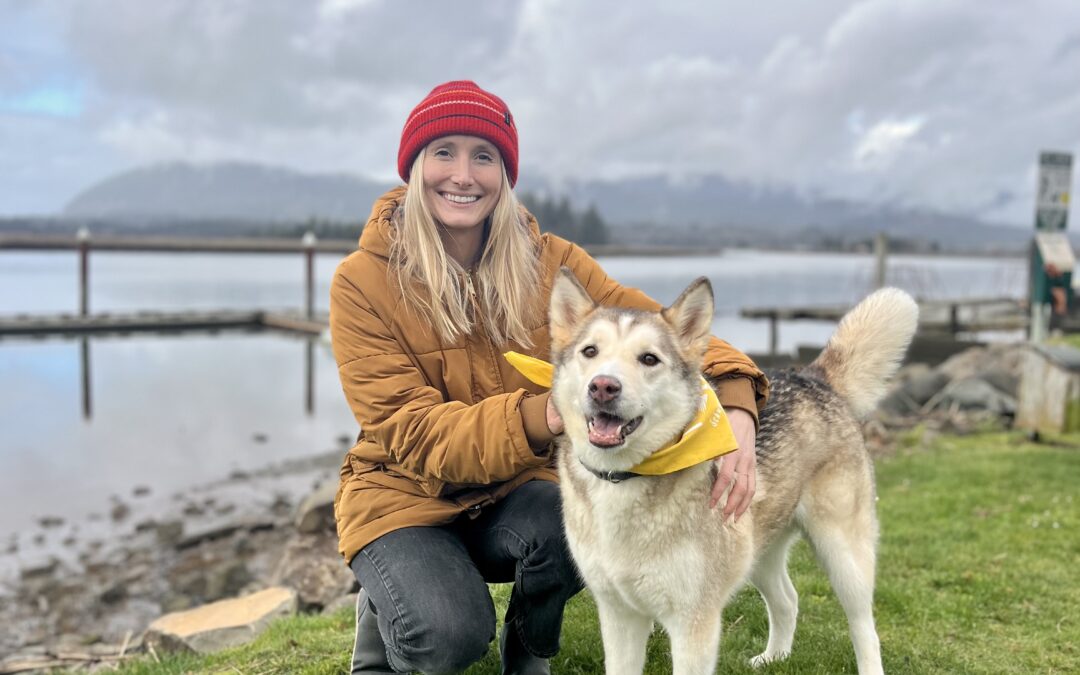
by Guest | Feb 20, 2024 | Being Well, Eat Well, Featured, Uncategorized, Why I'm In, Work Well
“WHY I’M IN …” An interview with Mari Tasche, Oregon Health & Science University
What drew you/your organization to partner with Tillamook County Wellness?
When first introduced to Tillamook County Wellness, I was inspired by the work of the committees and felt that TCW aligned with my passion for improving the wellness and quality of life of others, particularly those made vulnerable by current systems. I have always been actively involved in my community, whether coaching youth soccer or coordinating a community-wide couch to 5k running group. As an exercise physiologist looking to transition into public health and plant my roots on the north coast, TCW provided a great opportunity to understand the region’s needs and get involved in efforts to address community health.
What, if any, changes have you seen come about as a result of this work?
Improving the health and wellness of a county is challenging work and truly takes a village. TCW is a unifying force that brings people and organizations together to share knowledge, leverage resources, and provide support. This strengthens our connections, creates unity, and fosters collective progress for the betterment of our community. I have seen many organizations coordinate and collaborate on projects, programs, and initiatives they might not have otherwise pursued together. This coalition has also taken ownership of the community health needs assessment and improvement plan to address the region’s top health and social needs. Efforts include evaluating and refocusing the work of committees, pursuing or supporting grants, establishing or strengthening partnerships, and broadening community outreach and engagement.
What have you learned from being involved in this work?
I have learned that opportunities are endless if you make the effort to reach out. Many people want to see this county thrive and want to contribute their part to make that happen. It is inspiring and fuels my optimism for this work. I have also learned that this work is like climbing a mountain with no top. It’s endless, but if you enjoy what you are doing, it doesn’t feel like a daunting task- and don’t forget to celebrate the small steps!
What are your hopes for this work as it relates to you/your organization?
My role has continued to evolve since joining a few years ago, and I strive to find my niche and how to best contribute my time and resources to TCW. As I wrap up my master’s degree in public health this fall, I am looking to align my final projects with TCW initiatives and develop relevant content and materials to drive this work forward. As a regionally based employee with the Oregon Rural Practice-based Research Network at OHSU, I aim to pursue future opportunities for cross-over and collaboration.
What are your hopes for this work as it relates to changing community health in Tillamook County.
Changing community health takes a multifaceted and dynamic approach. I hope that TCW continues to address this challenge holistically by strengthening a diverse network with a unified message, comprehensive strategy, and county-wide framework that can meet the needs of every individual and help them live their best, healthy lives.
Is there anything else you’d like to share?
I appreciate being a part of this coalition and look forward to what we can accomplish in the coming years.
For more local health and wellness information, visit www.tillamookcountywellness.org or follow Tillamook County Wellness on Facebook and Instagram.





